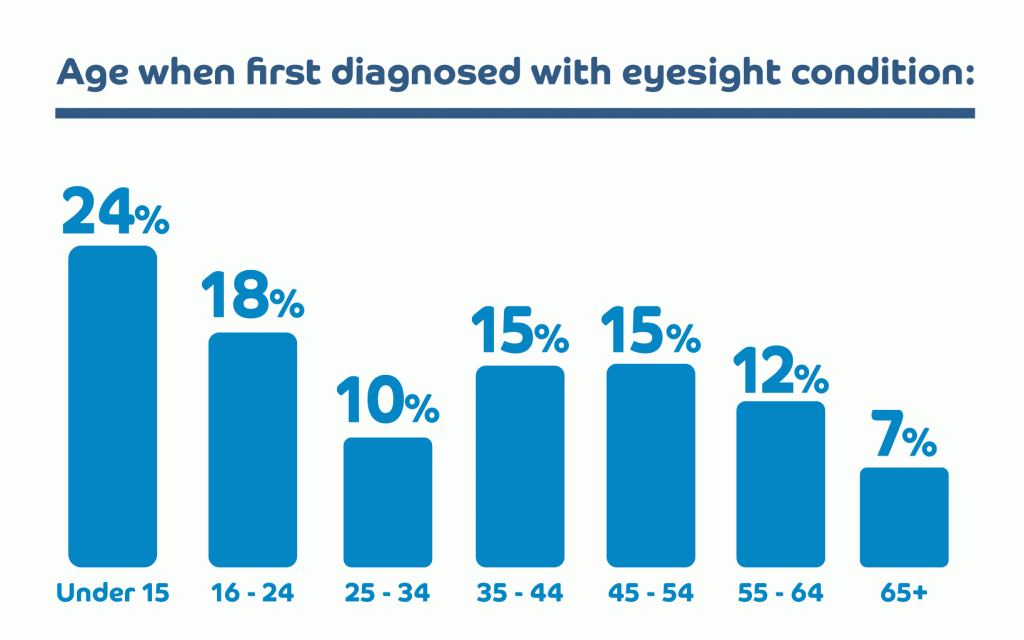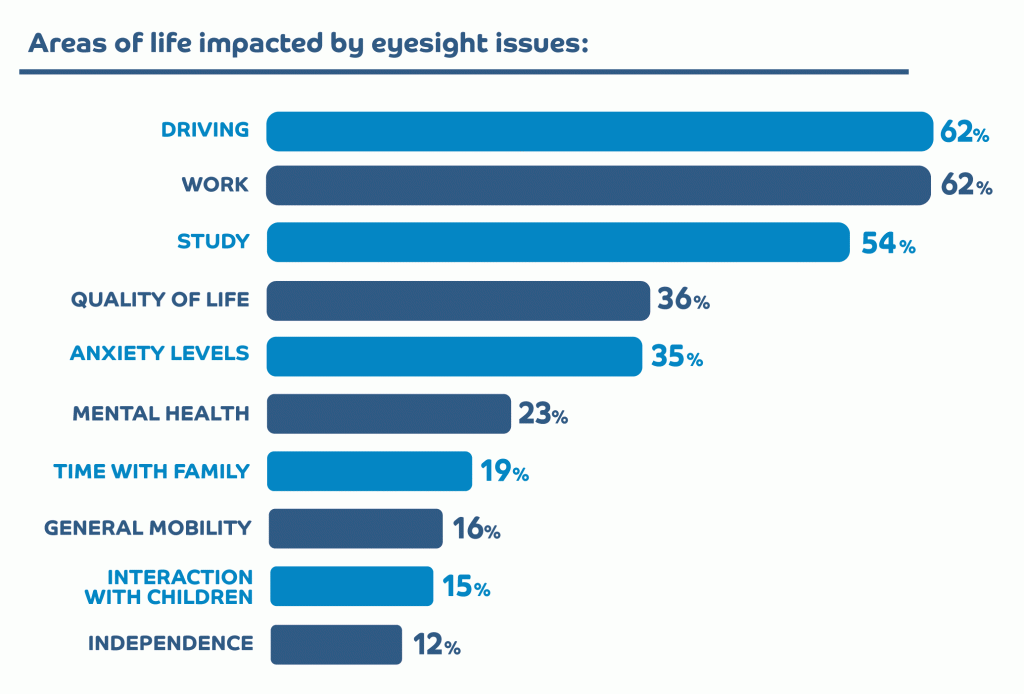It’s easy to take good eyesight for granted – until something happens to change it. For those blessed with perfect vision until later in life, declining eyesight is often associated with ageing, but in reality a significant number of eye issues are diagnosed before adulthood.
A recent Ekas poll of patients with a wide range of eye conditions revealed almost a quarter (24%) were diagnosed before age 16, almost half (47%) before age 30, and almost three quarters (74%) by age 50.
And while wearing glasses has been linked to a host of surprising benefits beyond simply improving day-to-day vision – including higher intelligence, potentially better protection against COVID-19 and even greater success in elections – an initial diagnosis can naturally cause anxiety for patients.
We took a deeper dive into the journey from diagnosis to treatment to help better understand the day-to-day impact and long-term outlook for those currently living with eye conditions in Australia.

Childhood vision problems: the pathway to treatment
The conditions most commonly diagnosed in childhood (patients aged 16 or under) were amblyopia (a lazy eye), refractive errors and strabismus (eyes turning in or out), although both cataracts and glaucoma diagnoses were also reported in this age group.
As any parent or carer who has had to go through diagnosing and treating an eye condition in a child will know, the process can be challenging and emotional for both children and parents.
Fortunately, the quality of screening and treatment has improved so much that eye conditions can often be picked up early in children before it affects their education and day-to-day life.
One respondent, now in her 40s, reported feeling “special” after hearing her diagnosis. “ I was five at school doing the eyesight check, and they found out that my right eye natively is long sight while my left side is short sight.” she recalled. “I need glasses when reading but it will not affect my daily life that much.”
A willingness to wear glasses isn’t the case for all children. One patient, growing up in the 1950s, remembered feeling “frustrated and embarrassed to have to wear spectacles.” Although he now feels positive that his treatment has meant his life hasn’t been greatly impacted. “With good quality spectacles and my cataracts being replaced a few years back I feel my eyesight is not holding me back from any activities.”
Into adulthood and beyond
Once a patient reaches adulthood, the types of eye condition patients are most likely to be diagnosed with shifts. Colour deficiency, for example, is more commonly diagnosed in those aged between 16 and 24, while those over 55 – perhaps unsurprisingly – are more likely to be diagnosed with cataracts.
For a majority of patients, early diagnosis has offered positive outcomes. 62% of the patients polled were diagnosed early, and just 6% report having a late diagnosis. Of the late-diagnosis patients, just over a fifth (22%) say their delayed diagnosis meant treatments would not be effective.
Receiving a diagnosis for an eye condition can come with a range of emotions – from fears over further deterioration to anxiety over how life might change. Our survey revealed the biggest areas of life affected by vision problems were driving, working and studying.

‘I wear glasses full time. It’s part of who I am’
While some of those we polled reported feeling scared or sad when they were first diagnosed, the most common feeling was a desire to move forward and get on with life, with 30% saying they felt ready to take the next steps to treat their conditions.
“I get on with it,” explained one patient who has lived with her eye condition almost her whole life. “I was wearing glasses at the age of three and now I am 60.”
Another patient, who was diagnosed with myopia after being unable to see the board at university, remembers feeling a sense of relief after hearing the news, yet frustrated at having to wear glasses forever. However, her outlook for the future remains positive and optimistic. “I wear glasses full time and have for almost 20 years now. It’s part of who I am.”
The future
For some patients, adapting their daily lives to their eye conditions – whether through wearing glasses or avoiding exposure to bright light -is a reality that has become the new normal.
However, for certain conditions the results of surgery or treatment can be life-changing.
37% of patients polled say their eye disorder has been corrected since diagnosis, with some reporting significant vision improvements that have enabled them to abandon wearing glasses altogether.
One patient recalled: “I visited my optometrist for a check up and to update my glasses and he informed me that the cataracts in my eyes were at a point where surgery would assist.”
She had cataract and laser correction in one eye, and then cataract surgery in the second eye. “I now read and do most tasks without any need of glasses,” she said. “I have a great outlook on the rest of my life and no bad after-effects from my condition.”
Another patient, who was diagnosed with hyperopia, concluded: “With good quality spectacles and my cataracts being replaced a few years back, I feel my eyesight is not holding me back from any activities.”
KEY FINDINGS:
- 47% of eye conditions were diagnosed before age 30
- The most common symptoms reported by patients with eye conditions were blurred vision (63%), loss of focus (39%) and light sensitivities (28%)
- 62% of patients received an early diagnosis
- 79% of patients were able to receive a diagnosis at their first appointment
- 37% of patients say their eye disorder has been corrected since diagnosis
Ekas spoke to 542 members on it’s panels Apple A Day Research and Select Opinion Leaders in June 2021.
